The Guge Kingdom lies 25km north of Zhada County ( Other names: Tsamda, Zanda) and 15km from Tsaparang. This is one of the most important tourist site after Mount Kailash in far western Tibet. It takes about 3 – 4 days by and coveres almost 1500km one way from Lhasa by car. Though it takes long time to get there but you won’t be get bored in the car as you will be seeing many famous sightseeings along the way, such as Yamdrok Yumtso Lake, Gyantse, Shigatse, Lake Manasarovar, Lake Rakshastal, Mount Kailash, Tirthapuri, Toling.etc. You can even make a detour to Mount Everest Base Camp and Peikutso Lake. Of course, you will be amazed by seeing such a kingdom was existed in Tsaparang valley.
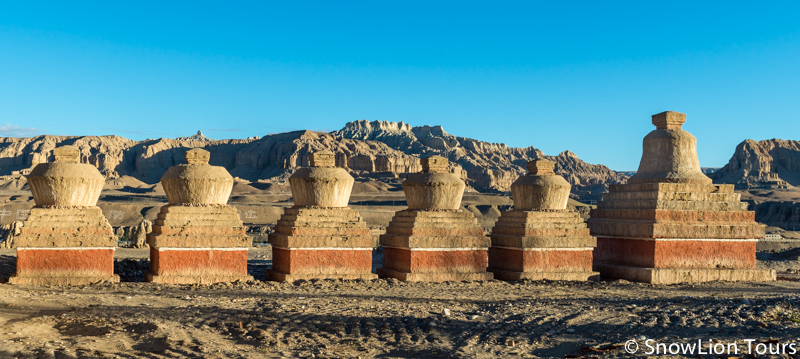
On the way to Guge Kingdom from Toling Monastery
The Guge Kingdom is located on on a yellow earth mountain at the bank of Langchen Khabab River which flows from Mount Dise, the main peak of Gangdise range and ends in Indian ocean. This kingdom was founded in the 10thcentury by the grandson of Langdarma who was the last monarch of the Tibetan empire – Nyiamgon.Nyiamgon fled from Lhasa to Ngari region during the religion persecution period, he fled to Mang-yul where he joined a local force named Tashi-tsan and married with his daughter, he had three sons later Palde-gon, Tashi-gon and Detsug-gon. When Nyiamgon’s three son grew up, They divided his kingdom into three parts. The king’s eldest son palde-gon was granted territories around Purang. Tashi-gon was given the region Northern Kailash, while the youngest son who became the founder of the Guge Kingdom.
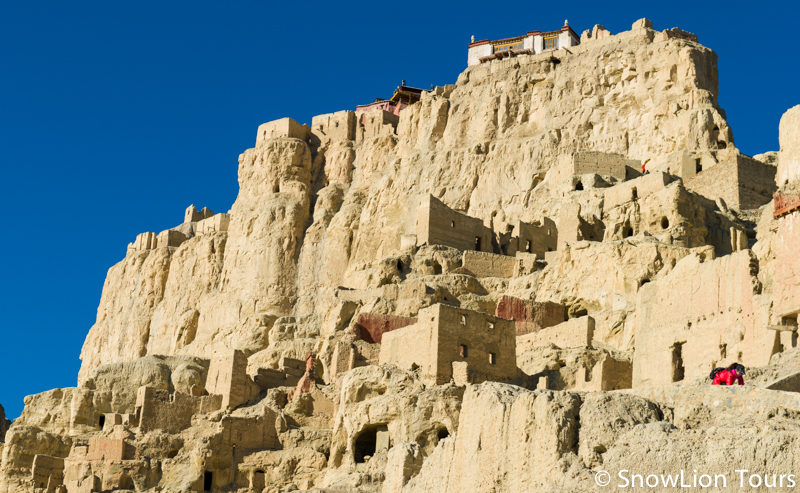
Ruins of Guge Kingdom
This barren and eroded landscape hardly shows its prosperity as a ancient flourish kingdom, but it did thrived here as a Tibetan Kingdom and an important stop on the trade between India and Tibet. At least, its construction tells. There is a loess hill about three hundred meters high where the site of ruins of a wall and castle lies, most importantly is the remains of Guge Kingdom. There are seven forts and three temples on the northeastern side of the hill, there are more than three hundreds caves locating at the hillside. A fortification wall and numerous ruins of Buddha carvings surround the whole area. Its major buildings are Dolma Lhakang (Temple of Tara), Lhakhang Karpo (White Temple) and Lhakhang Marpo (Red Temple) and Doje Jigshed Lhasa (Vajrabhairava Temple). According to the ruins and paintings on the wall inside these temples, you can see the prosperity of this kingdom and cultural and arts influential from Indian masters and artists.
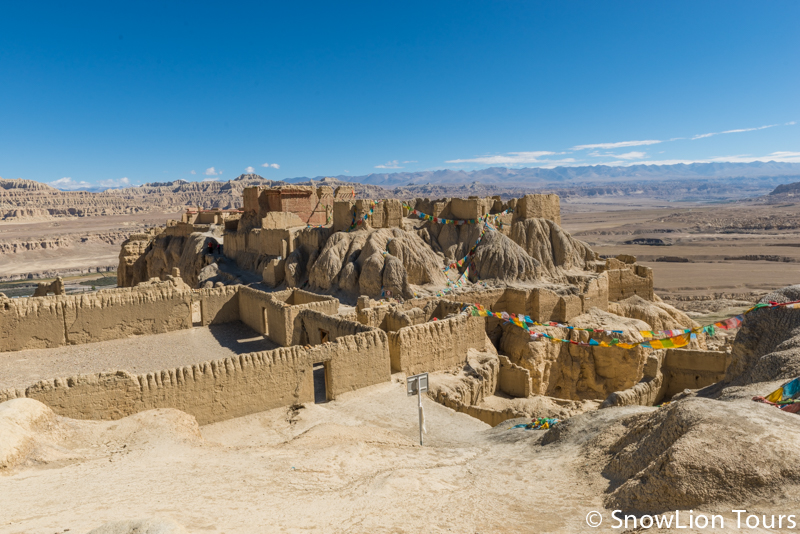
The top buildings of Guge Kingdom Palace
Such a mysterious kingdom rose and fell in human history and left great history, culture and legend. Buddhism were suffered from persecution during Lang Darma and advocated by King Yeshe-o. With some unknown wars between rulers of this region, or perhaps some other reasons such as exteme natural force tuned down the history of this kingdom eventually. However, the statues, carvings and murals that have been excavated are the great treasure of this mysterious kingdom.
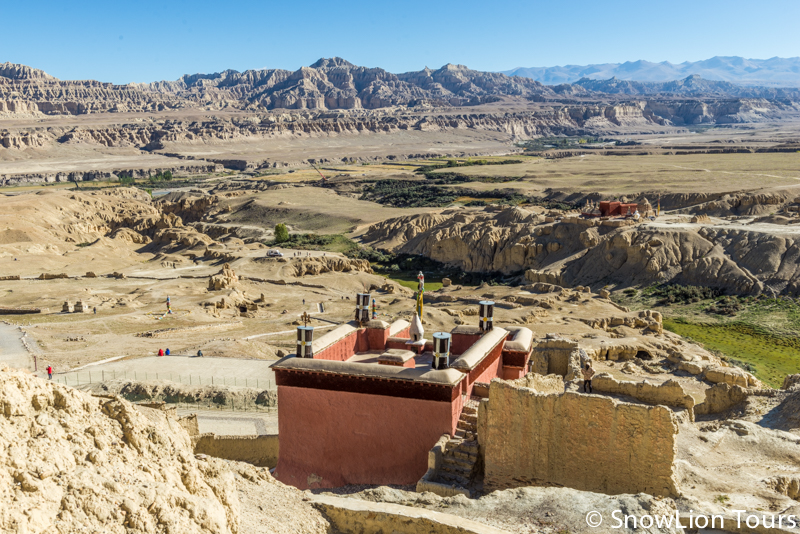
Red Temple and Tsaparang Valley in Guge Kingdom
Ngari region to this day has remained a region of mystery, pilgrims, explorers or travelers are continuously exploring this unkown land. If you are one of them, there are few way to get to Guge Kingdom and other parts of Ngari : 1), Lhasa to Guge Kingdom which is the most common way to get to Ngari region, 2). Overland from Kathmandu to Guge Kingdom via Kyirong port. 3). From Nepal border HIlsa Purang trek.
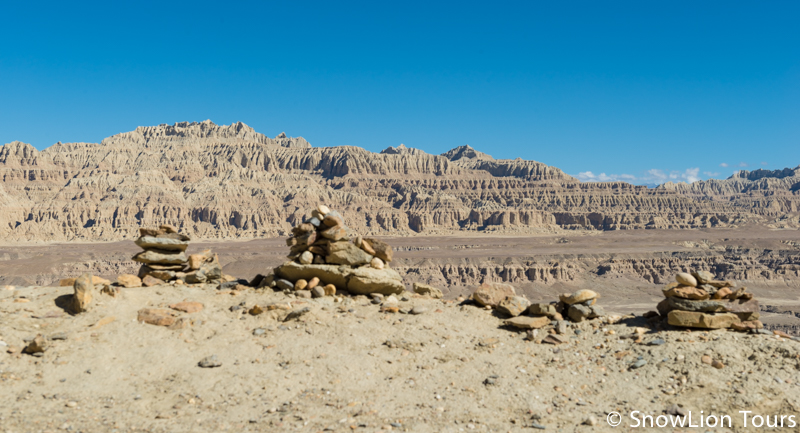
The valley of Guge Kingdom





